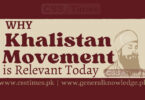Clashes erupt periodically in the Nagorno-Karabakh region, and the latest crisis has raised fears of an all-out war.
Nagorno-Karabakh, a mountainous, heavily-forested, landlocked region in the South Caucasus, is at the heart of a decades-long armed standoff between Armenia and Azerbaijan.
On September 27, 2020, the heaviest clashes since 2016 erupted, prompting fears of an all-out war between two former Soviet republics.
Both sides accuse one another of initiating the violence and there are reports of dozens dead.
“We are a step away from a large-scale war,” said Olesya Vartanyan of the International Crisis Group, an NGO focused on preventing and resolving deadly conflict.
She has warned that the current clashes could evolve into a bigger escalation than in April 2016 when dozens of people from both sides were killed in the most serious fighting in the region in years.
The international community is concerned about the prospect of war because Nagorno-Karabakh serves as a corridor for pipelines taking oil and gas to world markets.
Fighting between Azerbaijan and Armenia threatens to embroil regional players Russia, which is in a military alliance with Yerevan, and Turkey, which backs Baku.
“It’s a region of international importance, which has actually grown more internationally important in the last 25 years because of oil and gas pipelines [going] through it,” Thomas de Waal, senior fellow with Carnegie Europe specialising in Eastern Europe and the Caucasus region, told Al Jazeera. “It’s a region that borders Iran and it’s in the European and Russian neighbourhood, and the US also got involved in the 1990s.
“What we’ve seen the last few years is disengagement by the US in this issue, it used to take a much more leading role than it does now. Cynically one might say that if Azerbaijan has launched a military offensive, one of the reasons it may have done so is because the US is so disengaged at the moment.”
Armenia, which has declared martial law, has accused Turkey of meddling in the conflict and sending thousands of mercenaries from northern Syria to the battlefield, a claim rejected by Azerbaijan.
France, Germany, Italy, the United States, the European Union and Russia have urged a ceasefire.
“If you put Armenia and Azerbaijan on the map and take a look, it is strategically very important. You have Turkey to the west, Iran to the south, Russia to the north, and huge quantities of Caspian hydrocarbon reserves to the east, which transits through the Caucuses, very close to where the fighting is taking place right now,” said Al Jazeera’s Robin Forestier-Walker, who has extensively covered developments in the region.
“In terms of involvement on the ground, the Armenians are very concerned about the noises coming from Turkey, from President [Recep Tayyip] Erdogan himself, who has emphatically given his support for Azerbaijan.”
On Sunday, following a phone call with Azerbaijani President Ilham Aliyev, Erdogan called on Armenians to stand against their leaders who he claimed were “dragging them to catastrophe”. The Turkish president has said his solidarity with Baku would “increasingly continue”.
“There were military exercises in August between Azerbaijan and Turkey, and there is some not unjustified suspicion that some of the military hardware that Turkey brought over may still be in Azerbaijan and could be used against Armenian positions,” said Forestier-Walker.
“Obviously, we have to be careful about that, because there are no clear facts that that is taking place. Let’s also not forget Russia’s military presence in Armenia and its involvement in mediation, but also in supplying weaponry to both Armenia and Azerbaijan over the years.
“Iran to the south … has offered to mediate in potential peace talks.”
While Nagorno-Karabakh is part of Azerbaijan according to international law, ethnic Armenians, who make up the vast majority of the population – about 150,000 people – reject Azerbaijani rule. They have been running their own affairs, with support from Armenia, since Azerbaijani forces were pushed out in a war in the 1990s as the Soviet Union collapsed.
The OSCE Minsk Group – co-chaired by France, Russia and the US – was formed in 1992 to find a peaceful solution to the conflict, but to no avail. A ceasefire, however, was declared in 1994.
“Unfortunately, this round of fighting promises to be the worst, probably since the ceasefire [in 1994],” de Waal said.
“Of course, the war of the 1990s was a very low-tech affair and now, as we’re seeing today, a much more heavy weaponry on both sides whose destructive is much power [is being used].
“But ultimately, this is a conflict of identity, of territory, between two nations – Armenia and Azerbaijan – and the outside world is not going to solve it … It has to be their own calculation.”
SOURCE : AL JAZEERA, NEWS AGENCIES
Before you leave check our complete range of Essay for CSS/PMS
- Kashmir—a nuclear flash point | Essay, Current Affairs Notes
- Reinventing the Afghan-Pakistan region | CSS Essay Material
- The Nagorno-Karabakh Conflict between Azerbaijan and Armenia (Essay Outline)
- Reforming and modernising Pakistan | Essay Materials for Competitive Exams
- Kashmir and the United Nations Security Council | CSS Essay Material
- CSS Essay on “Covid-19 Pandemic”
- Understanding the Two-Nation Theory | CSS Essay Material
- Pak-Saudi Relations | CSS Essay Material
- How to start CSS/PMS Essay Writing? (By: Saeed Wazir)
- Essay for CSS | Legal Empowerment of Women in Pakistan








[…] Read Also: Why you should care about conflict between Armenia and Azerbaijan […]
[…] Read also: Why you should care about conflict between Armenia and Azerbaijan […]